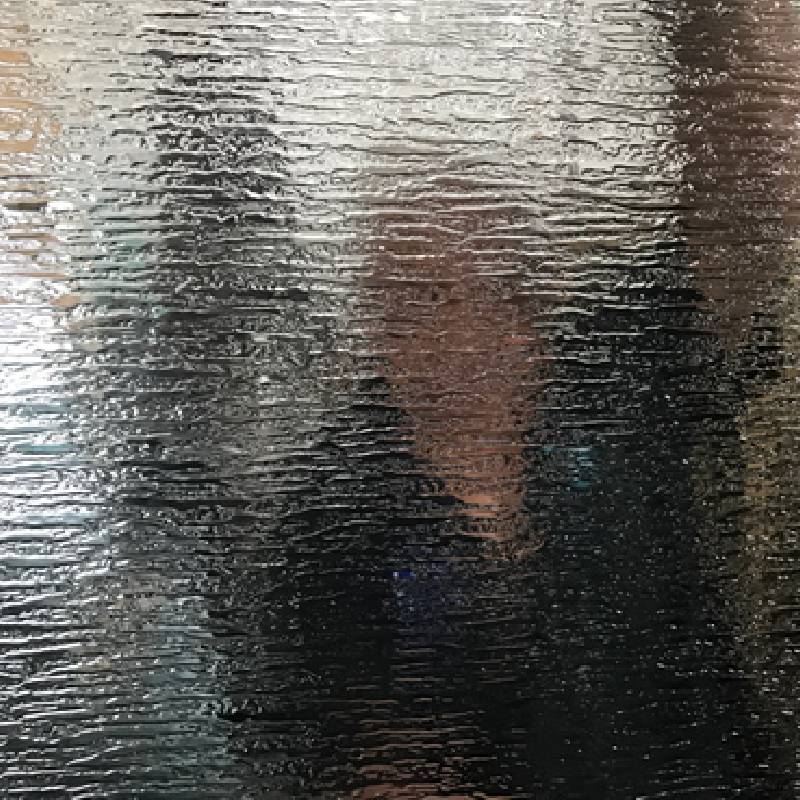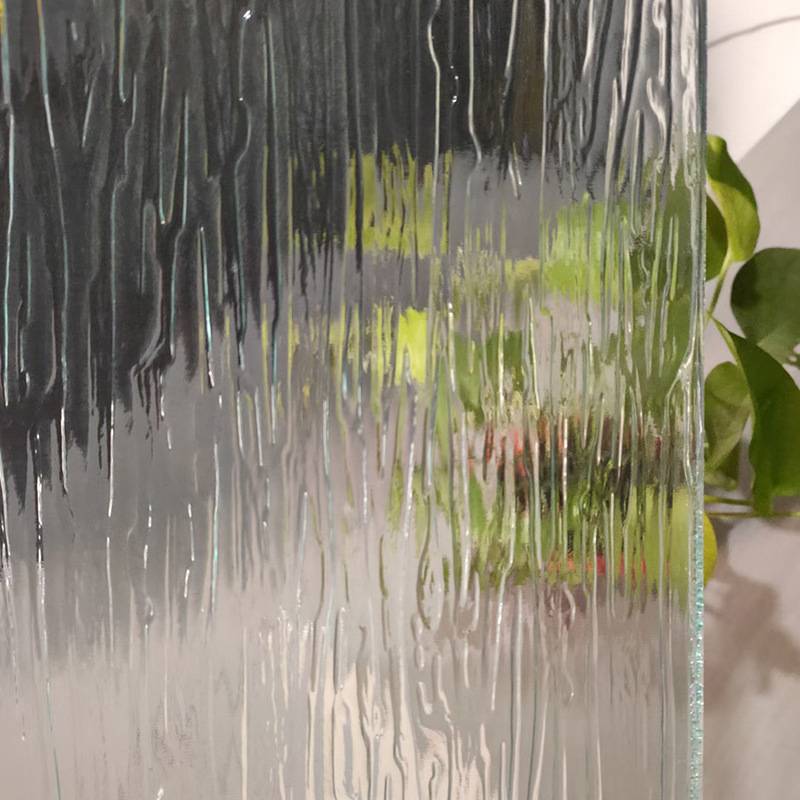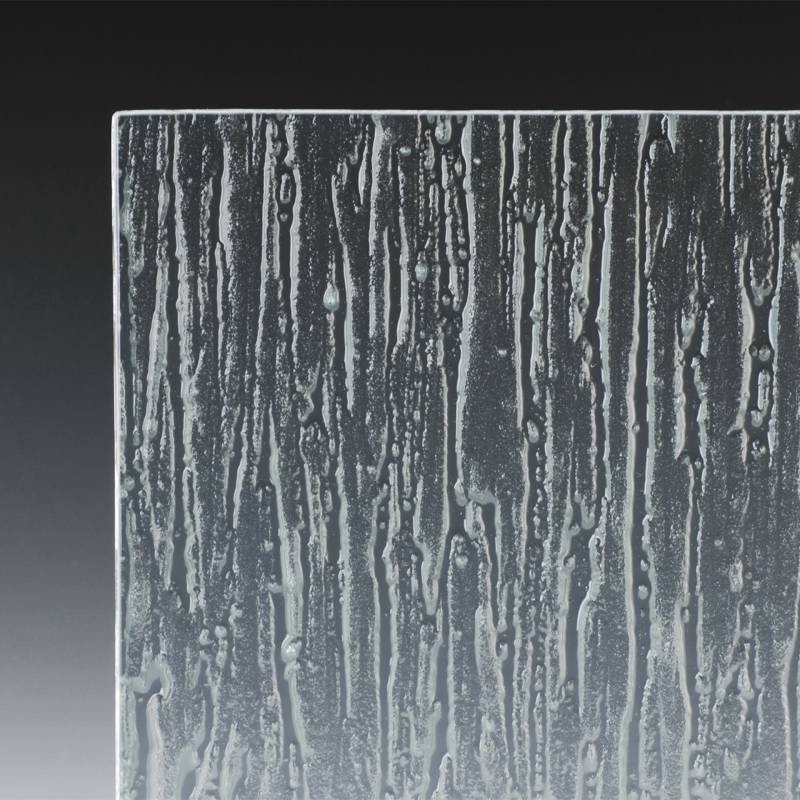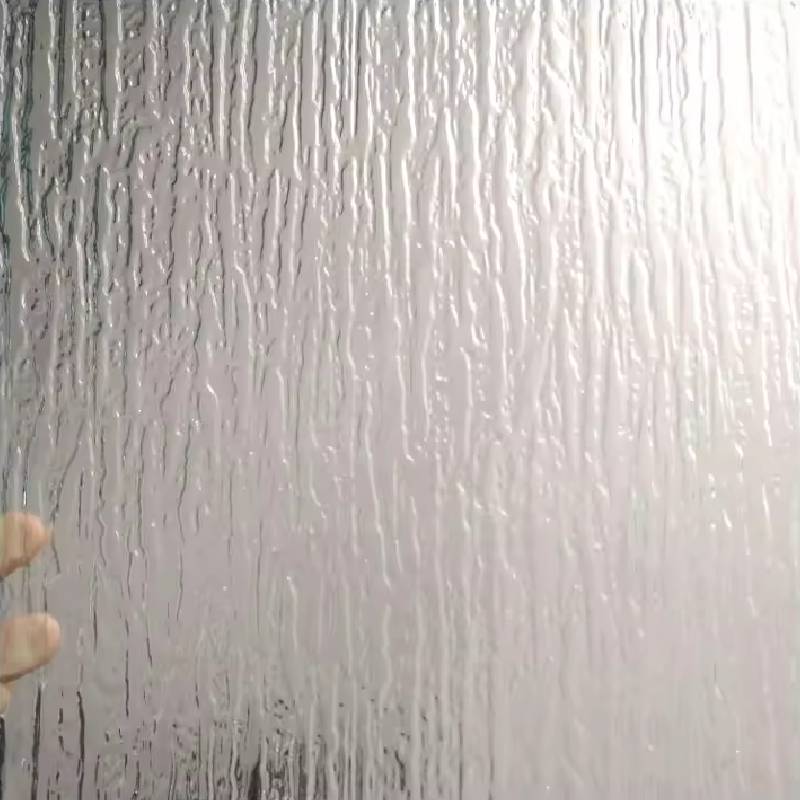1. What is the main difference between rain glass and frosted glass?
Rain glass's patterned surface is achieved by rolling molten glass between textured rollers, creating visual vertical ‘rain’ lines. Frosted glass is formed via sandblasting or acid-etching, producing a uniform, matte look but less light diffusion. Rain glass preserves more natural daylight and provides a dynamic privacy effect.
2. Are rain pattern glass and rainfall glass the same?
Yes, both refer to glass featuring a similar vertical, water-droplet-like texture, but "rainfall glass" sometimes implies larger droplet impressions. Check with your supplier for pattern samples.
3. What is the recommended installation standard for rain tempered glass?
Install per ANSI Z97.1/EN 12150-1 (for safety glazing): secure into frames with appropriate clearances (typically 3mm min) and use compatible silicone or EPDM gaskets to allow thermal expansion and absorb stress.
4. What is the minimum order size for custom rain pattern glass?
MOQ is usually 50m² for custom thickness/pattern design, but
standard rain glass is available from 5 pieces up.
5. What safety tests are performed on rain tempered glass?
Tests per ISO/ANSI: impact resistance (steel ball drop), fragmentation, light transmittance (ASTM E903), and thermal shock performance (EN 12150-1 Appendix A), all with full traceable records provided to clients.
6. Can rain glass be double glazed for better insulation?
Yes, rain glass can be combined in IGU (insulated glass units) for improved U-value and noise reduction, ideal for energy-efficient windows and doors.
7. What is the expected service life of rain glass in industrial environments?
Properly installed and maintained, 4mm–6mm rain glass routinely lasts 20–35 years, retaining at least 85% of initial clarity and pattern definition (laboratory test: EN 1096 accelerated weathering).
 Afrikaans
Afrikaans  Albanian
Albanian  Amharic
Amharic  Arabic
Arabic  Armenian
Armenian  Azerbaijani
Azerbaijani  Basque
Basque  Belarusian
Belarusian  Bengali
Bengali  Bosnian
Bosnian  Bulgarian
Bulgarian  Catalan
Catalan  Cebuano
Cebuano  Corsican
Corsican  Croatian
Croatian  Czech
Czech  Danish
Danish  Dutch
Dutch  English
English  Esperanto
Esperanto  Estonian
Estonian  Finnish
Finnish  French
French  Frisian
Frisian  Galician
Galician  Georgian
Georgian  German
German  Greek
Greek  Gujarati
Gujarati  Haitian Creole
Haitian Creole  hausa
hausa  hawaiian
hawaiian  Hebrew
Hebrew  Hindi
Hindi  Miao
Miao  Hungarian
Hungarian  Icelandic
Icelandic  igbo
igbo  Indonesian
Indonesian  irish
irish  Italian
Italian  Japanese
Japanese  Javanese
Javanese  Kannada
Kannada  kazakh
kazakh  Khmer
Khmer  Rwandese
Rwandese  Korean
Korean  Kurdish
Kurdish  Kyrgyz
Kyrgyz  Lao
Lao  Latin
Latin  Latvian
Latvian  Lithuanian
Lithuanian  Luxembourgish
Luxembourgish  Macedonian
Macedonian  Malgashi
Malgashi  Malay
Malay  Malayalam
Malayalam  Maltese
Maltese  Maori
Maori  Marathi
Marathi  Mongolian
Mongolian  Myanmar
Myanmar  Nepali
Nepali  Norwegian
Norwegian  Norwegian
Norwegian  Occitan
Occitan  Pashto
Pashto  Persian
Persian  Polish
Polish  Portuguese
Portuguese  Punjabi
Punjabi  Romanian
Romanian  Russian
Russian  Samoan
Samoan  Scottish Gaelic
Scottish Gaelic  Serbian
Serbian  Sesotho
Sesotho  Shona
Shona  Sindhi
Sindhi  Sinhala
Sinhala  Slovak
Slovak  Slovenian
Slovenian  Somali
Somali  Spanish
Spanish  Sundanese
Sundanese  Swahili
Swahili  Swedish
Swedish  Tagalog
Tagalog  Tajik
Tajik  Tamil
Tamil  Tatar
Tatar  Telugu
Telugu  Thai
Thai  Turkish
Turkish  Turkmen
Turkmen  Ukrainian
Ukrainian  Urdu
Urdu  Uighur
Uighur  Uzbek
Uzbek  Vietnamese
Vietnamese  Welsh
Welsh  Bantu
Bantu  Yiddish
Yiddish  Yoruba
Yoruba  Zulu
Zulu 






